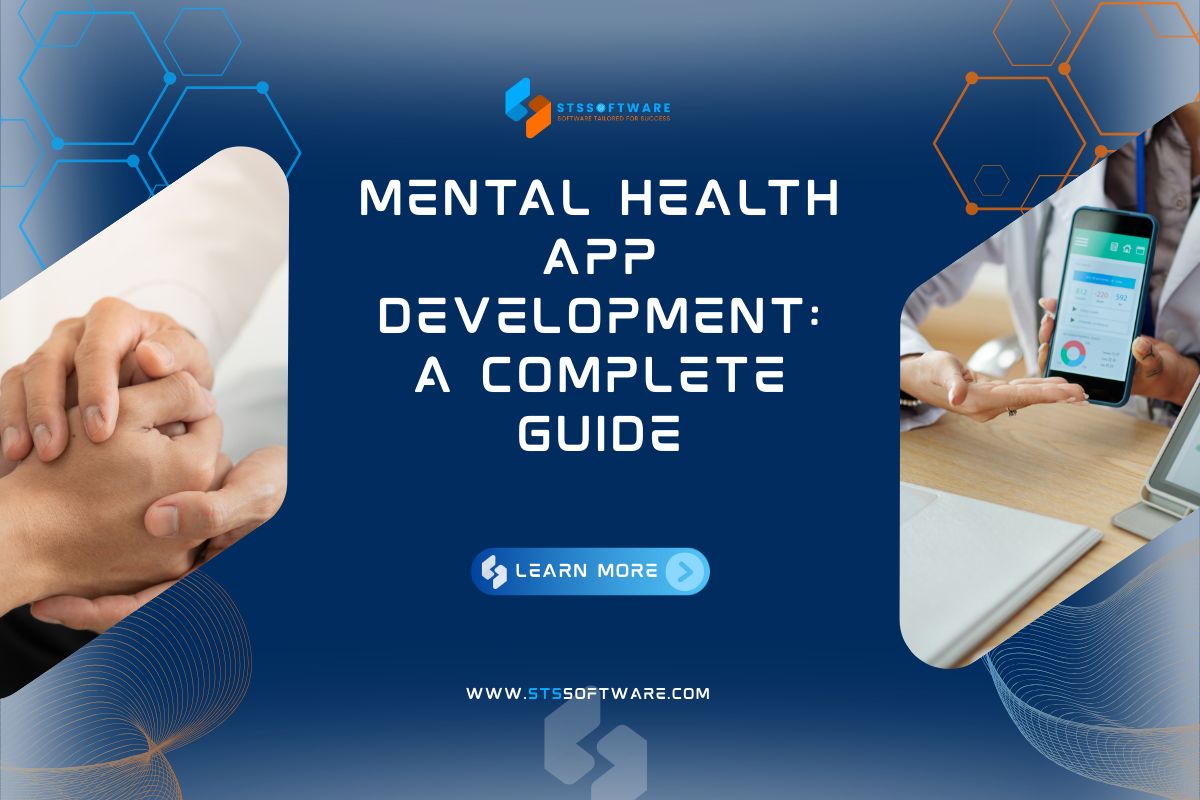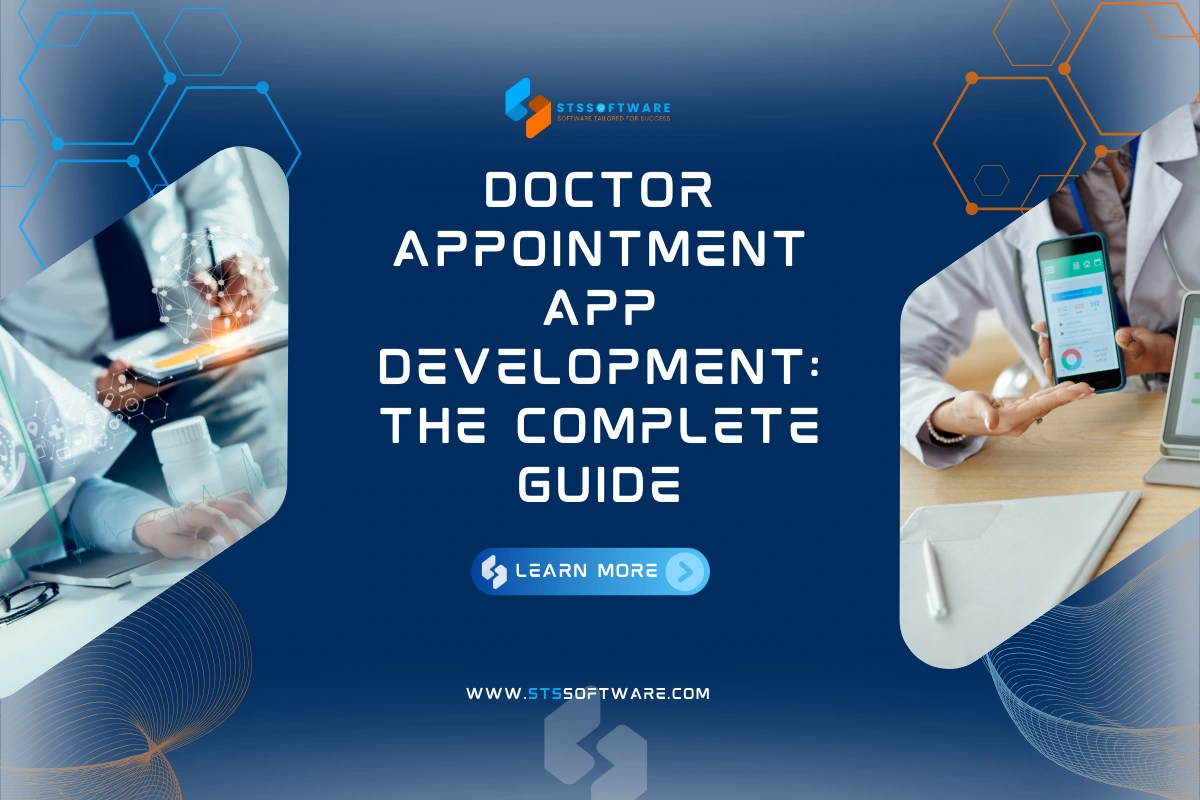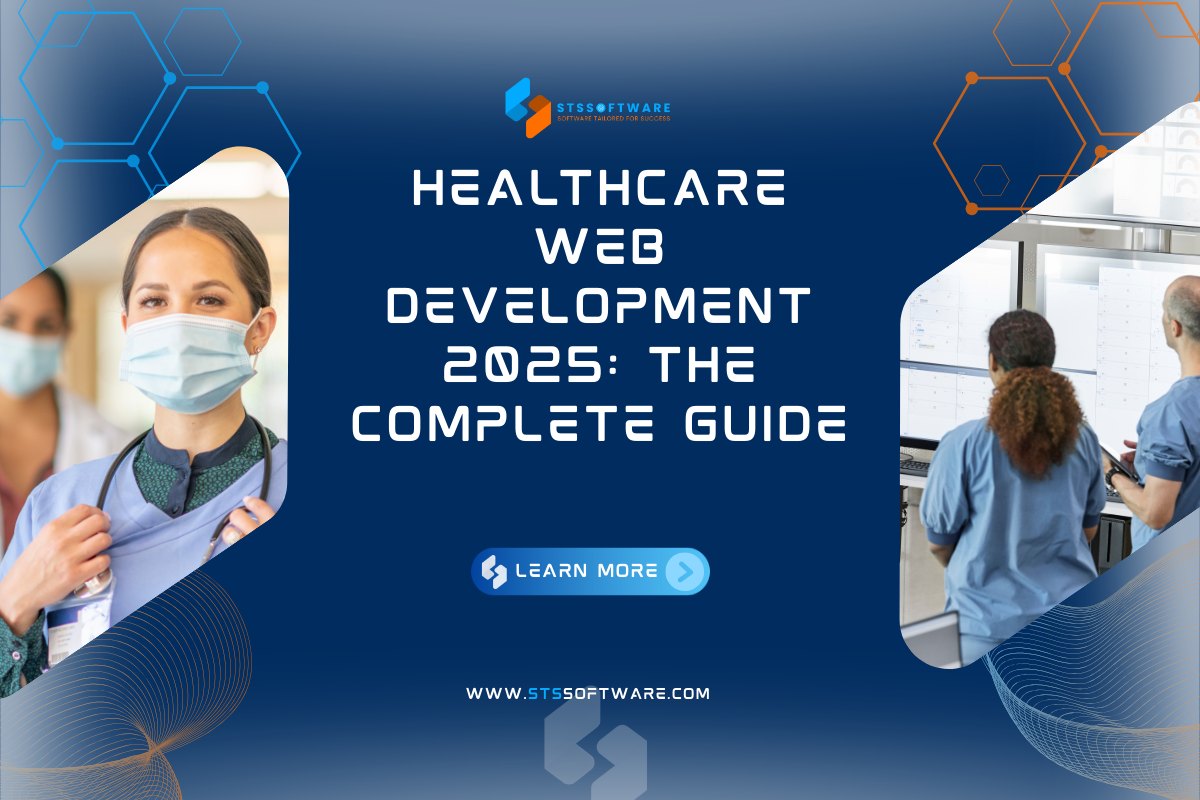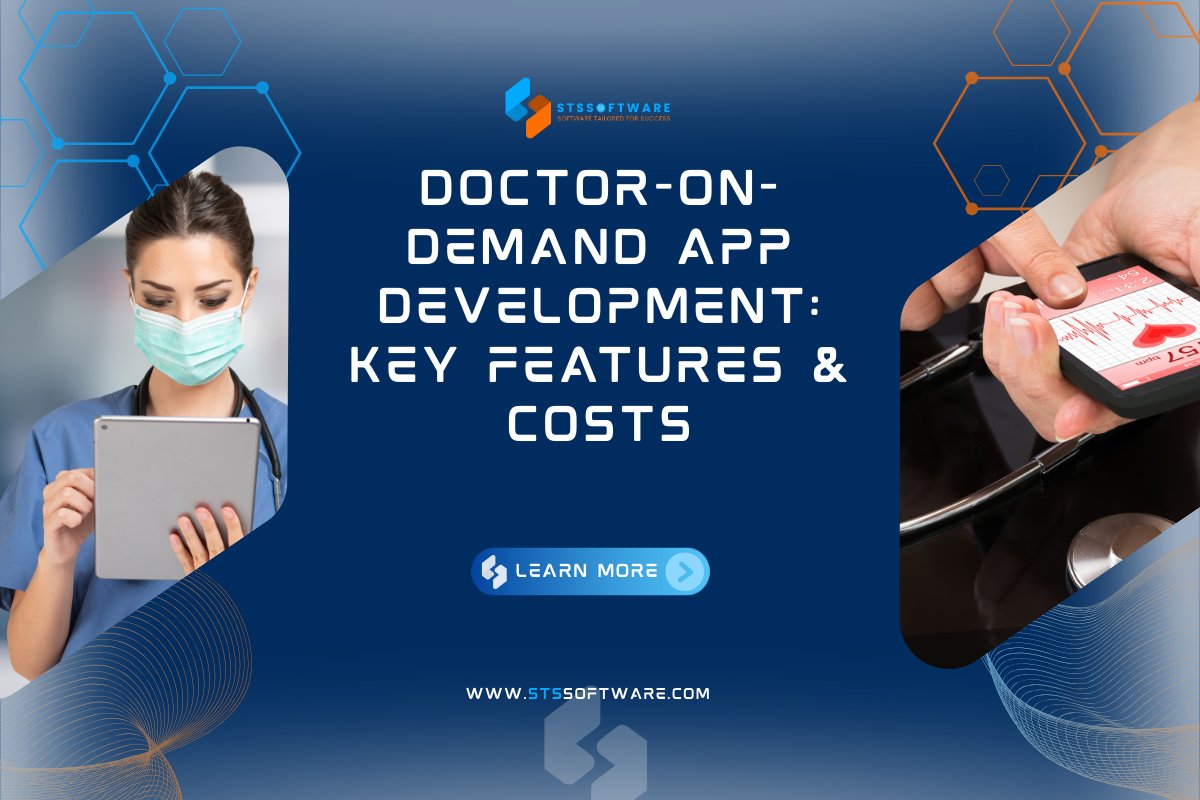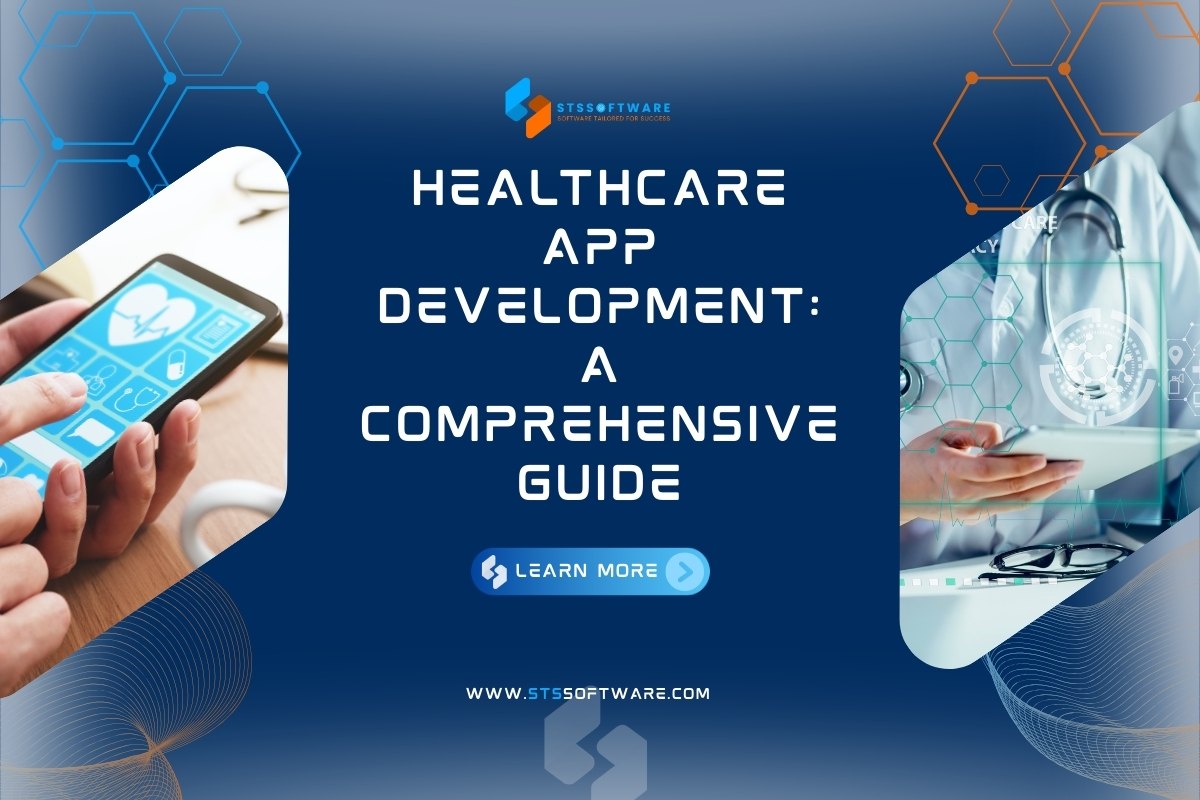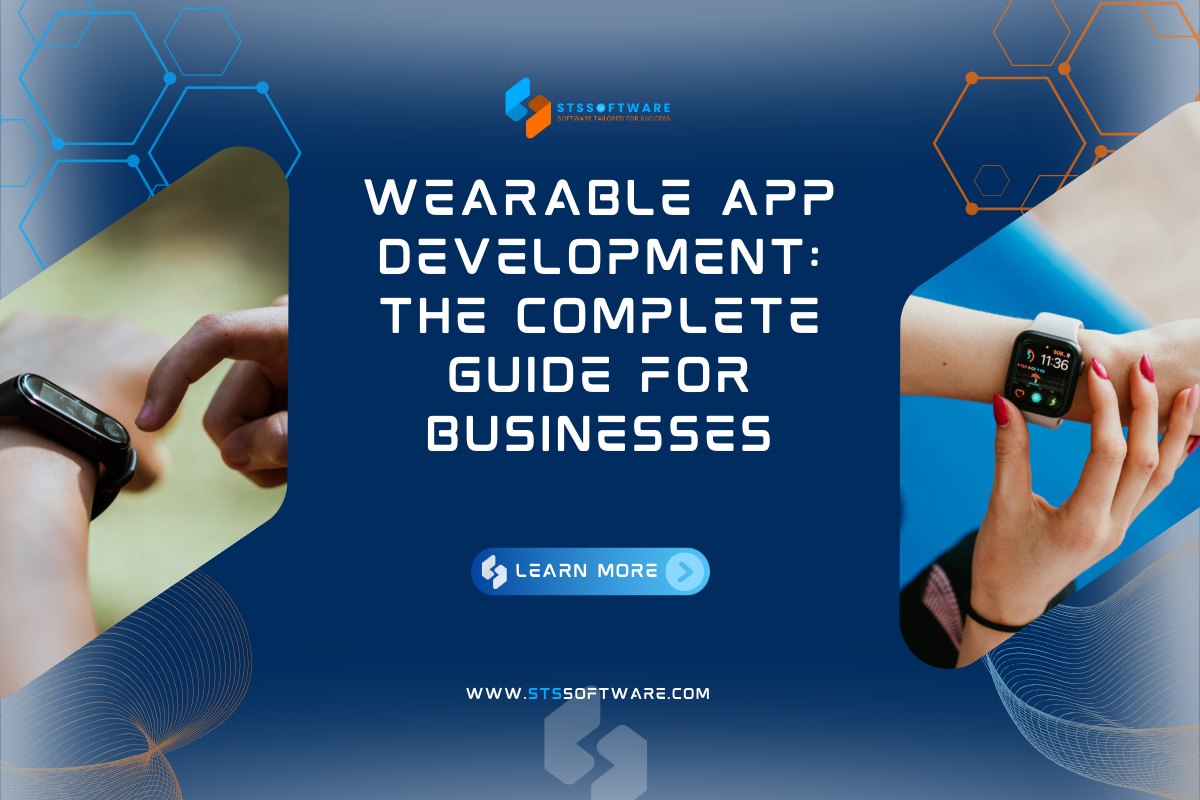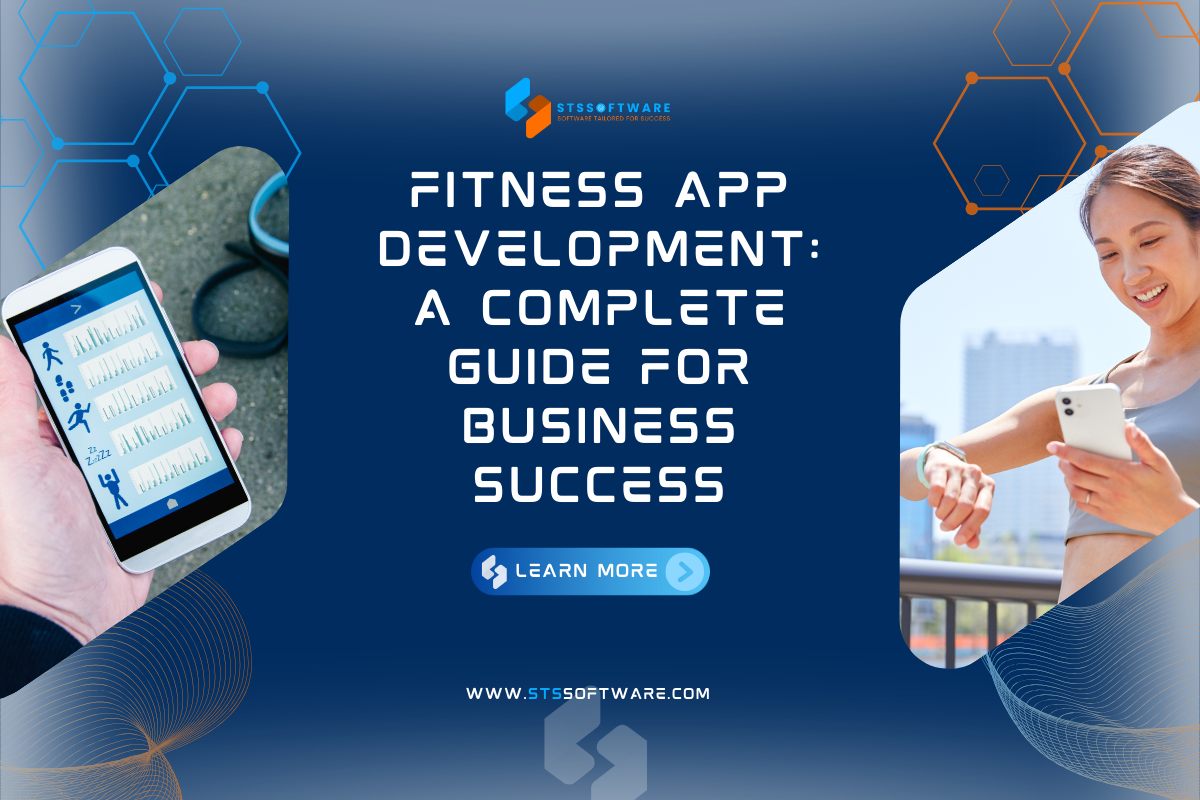In our modern society, mental health is quickly becoming a serious concern. People are resorting to mobile apps as an easy, private way of cheering themselves up, alleviating anxiety, or enhancing self-awareness. This has brought about a phenomenal increase in the growth of the app development market for mental health over the past few years.
Nevertheless, there are requirements on the side of companies that will be building such an app; they cannot just depend on technology. Creating a mental health application calls for knowledge in psychology, insights into user habits, and skill in crafting seamless user experiences.
In addition, legal and data security factors also play a vital role. Users share very sensitive personal information, so the app needs to ensure strict compliance with privacy protection regulations.
And this article will help you shape the important steps in the mental health app development journey. STS Software will cover the essential features, legal requirements to comply with, and technical standards to build a product that is both effective and safe for users.
The Growing Demand for Mental Health Applications
Mental health is experiencing rapid global interest. The users are searching for digital solutions to lift their spirits, control anxiety, and overcome depression. In this context, the mental health app development market has become a bright spot for both businesses and users.
The market is thriving thanks to real needs
The mental health app market reached a value of 7.48 billion USD in 2024. By 2025, the market size is expected to reach 8.87 billion USD. In the period of 2025–2030, the market is forecast to grow at a rate of 14.6% per year (grandviewresearch.com).
It can be seen that this growth comes from real needs: many people need mental support but are reluctant to see a specialist. Mobile apps offer a practical and on-demand way to support users whenever they need help.
Identify core user groups and understand their priorities
A recent survey found that 41% of adults have used a mental health app in the past year (bmcpublichealth.biomedcentral.com).
Of those, users are mostly between the ages of 18–35. They often look for features such as guided meditation, mood journaling, emotional cycle tracking, and stress management tips. They value apps that are easy to use, personalized, and responsive.
Future trends: personalization and AI integration
In this market, notable trends include integrating AI to analyze moods, support early intervention, and recommend relevant content in real time. Additionally, future apps need to ensure privacy, comply with medical regulations, and retain users for a long time.
Essential Capabilities Your Mental Health App Should Offer
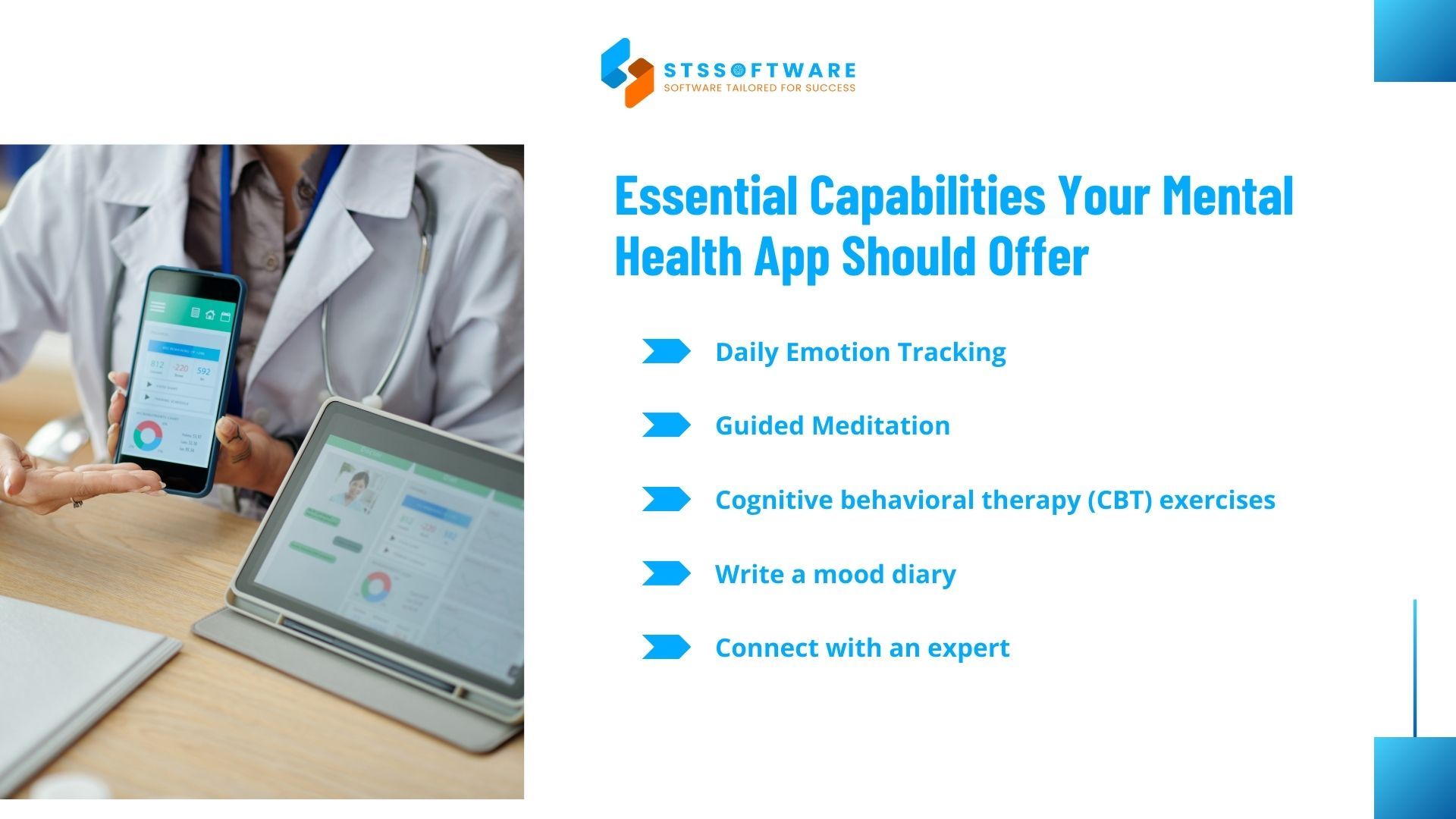
For a mental health app to be truly useful, businesses need to fully integrate core features. These elements not only help users improve their emotions but also create long-term trust. In the process of mental health app development, choosing the right features is a decisive factor for success.
Daily Emotion Tracking
This function is widely used and simple to integrate into mental wellness apps. For example, the Moodpath app allows users to quickly answer daily emotional questions. The data is aggregated to create a periodic mental health map, helping users understand their emotional trends.
Guided Meditation
The next, meditation helps reduce stress, improve sleep and stabilize psychology. The app should provide short meditations, with guided voices and relaxing sounds.
For example, Headspace is a popular meditation app that integrates more than 500 meditations with goals such as: good sleep, reduced anxiety, increased focus. This is an indispensable part of any modern mental health app development.
Cognitive behavioral therapy (CBT) exercises
In addition, CBT is an evidence-based therapy that supports users in shifting from negative to constructive thoughts.
For example, Woebot is one such application that uses AI to steer users through CBT processes, including identifying negative thoughts, re-evaluating rationality, and planting healthier responses, with increasing positive effect on mental health after a few weeks of use.
Write a mood diary
In addition, writing also helps users relieve stress and understand their emotions. Journaling tools help users easily track their emotions over time.
For example, Reflectly allows users to write a daily diary with a positivity rating. The app then analyzes and suggests relevant motivational content, helping users see their own progress.
Connect with an expert
The last one is that users may need to meet with an expert for proper advice. The app should integrate a chat or video call feature with a therapist.
For example, Talkspace allows users to choose the right psychologist and chat via text or video call. Easy access to experts increases the effectiveness of the app and sustainability in mental health app development.
The above mental health app features are both easy to implement and bring real value to users. When the app is built properly, it not only helps users improve their mental health but also creates a trustworthy, long-term experience.
User Engagement and Retention Strategies
In the process of how to develop a mental health app, building features is not enough. Keeping users engaged over time plays a crucial role in an app’s long-term success. The following strategies help increase mental health app engagement, thereby improving the effectiveness of mental health care:
Personalize according to the needs of each user
Each person has a different mental state and goals. The application should personalize content based on habits and behaviors.
For example, Happify uses input surveys to recommend suitable programs such as “reduce stress”, “increase confidence” or “be happier in relationships”. This helps users see content directly related to them, increasing the level of interaction.
Integrate game elements (gamification)
Gamification elements can make the user experience more enjoyable and engaging.
For example, the MindDoc application rewards badges when users complete a series of exercises for 7 consecutive days. Simple reward points and leaderboards encourage users to return to the app every day.
Tracking mental health progress
Along with that, users also need to see changes in themselves. The app should provide a progress tracking table for emotions or behaviors.
For example, Youper uses a chart to show changes in emotions over the week. Visible progress helps reinforce motivation, encouraging users to return regularly.
Send smart and timely reminders
Reminders help users not to forget to do mental exercises or write a diary. However, avoid being annoying.
For example, Calm sends notifications at the end of the day with a gentle reminder: “Have you spent time relaxing today?”. The subtlety in communication makes users not feel offended, but even feel cared for.
Increasing mental health app engagement is not just a short-term goal but a foundation for sustainable development. Businesses need to invest in user experience and maintain emotional connection. When users feel heard and supported at the right time, they stay with the app for a long time.
Technical Requirements for Mental Health App Development
To build an effective and stable mental health app, businesses need to understand the core technical requirements. Choosing the right technology helps ensure performance, security and scalability during mental health app development.
Choosing the right technology and platform
Firstly, mental health apps should be developed cross-platform (iOS, Android) to reach a wide range of users. Popular frameworks such as Flutter or React Native allow for fast, cost-effective construction. For example, Flutter helps synchronize user interfaces between operating systems, reducing testing time.
Backend requirements: stable, secure, scalable
Secondly, the backend system plays a role in processing user data, managing accounts, and interaction history. To ensure stable performance and meet the needs of expansion, businesses should choose a platform with good scalability such as Node.js, Django, or Firebase.
In addition, technical requirements for health apps require end-to-end data encryption and secure information storage. For example, Firebase supports multiple user authentication methods and provides cloud-based data storage with security certificates.
API and database integration
Thirdly, in mental health app development, technology plays a core role in making the application operate efficiently and sustainably. One of the important factors is the ability to integrate APIs and databases. The application needs to connect to external services such as payments, video calling or AI voice processing. For example, if supporting psychological counseling via video, it can integrate APIs of Twilio or Zoom.
At the same time, the database needs to be high-performance such as PostgreSQL or MongoDB to process large amounts of data quickly and stably.
Authorization and governance system
Finally, the authorization and administration system plays a role in ensuring the security of user information. Designing separate administration interfaces for psychologists and administrators helps control data effectively, while meeting medical information security standards.
In short, to build a reliable mental health application, businesses need to focus on the performance, security, and scalability of the technology system from the beginning.
Choosing Between Native, Hybrid, or Web Apps
When starting a mental health app, businesses must choose the right development path. Each option – native, hybrid or web – has its own pros and cons. The chosen platform significantly impacts development costs, user satisfaction, and the app’s ability to scale.
Specifically, we can compare 3 App Development Methods as the below table:
| Criteria | Native App | Hybrid App | Web App |
| Performance | Optimized, smooth, stable | Average | Low if heavy processing |
| User Experience | Good interface, fast response | Almost like native | Browser dependent |
| Development Cost | High (requires platform-specific development) | Lower than native | Lowest |
| Deployment Time | Longer (developed separately for each platform) | Faster than native | Fastest |
| Offline Accessibility | Full | Limited | Almost none |
| Hardware Integration (Camera, GPS, etc.) | Strong, easy to integrate | Can be integrated via plugins | Limited in many cases |
| Suitable for Psychological Apps | Suitable if high stability is required | Suitable for MVPs or limited budgets | Only suitable for simple apps |
So, suggested choices based on your goals:
- For meditation apps with audio and visual effects, native development is ideal for optimal performance.
- When working with limited budgets or testing an idea, hybrid apps are a cost-effective solution.
- For lightweight tools like mood trackers, a web-based app can get the job done efficiently.
Design Considerations for Mental Health Applications
Good design is central to delivering a meaningful and supportive user experience in mental wellness apps. The perfect design features not only beauty but also making a user feel safe and connected. An approach relevant to creating an apt app for mental health will focus on three things: accessibility, inclusivity, and a light interface.
Prioritize accessibility
Users may have mental health disorders, poor vision, or difficulty concentrating. Therefore, the app needs easy-to-read fonts, appropriate contrast, and simple navigation. For example, the Calm app uses large text, clear icons, and a dark background to reduce visual stress.
Inclusive design for all audiences
The app should be suitable for a variety of users: all genders, ages, and cultural backgrounds. Avoid judgmental language. The interface should be neutral and respectful of privacy. This concept forms one of the foundational guidelines when designing mental health applications.
Create a sense of security and comfort
The interface should be minimalistic, with soft colors. Images and sounds should be relaxing. For example, the MindDoc app uses pastel colors and light emoticons to create a friendly connection.
Optimize user experience (UX)
The app needs a clear layout, easy to operate, especially when the user is in a state of anxiety. Each action in the app should require as few steps as possible. Features such as daily emotional check-in should be placed on the home screen for ease of use.
Ensuring Data Security and Privacy Compliance
Protecting user data is a critical aspect when creating mental health applications. Users often share very private and sensitive information. Therefore, mental health app compliance is a mandatory requirement for every health tech business, specifically:
Comply with international privacy regulations: If the app serves users in Europe, you must comply with GDPR. For the US market, HIPAA is a mandatory standard. These regulations require the protection of personal information and limit access to medical data. Ensuring regulatory compliance helps reduce legal exposure and fosters user confidence.
End-to-end data encryption: All data must be encrypted when stored and transmitted. This helps prevent unauthorized access. Apps like BetterHelp use SSL protocol and AES encryption to ensure mental health app security is always at the highest level.
Authentication and access authorization: The app needs to authenticate users with multiple layers: password, OTP or biometrics. At the same time, it is important to limit access to internal employees. Restrict access to confidential information to approved employees.
Security testing and updates regularly: Security is not a one-time feature. Systems need to be updated regularly to patch vulnerabilities. Many organizations incorporate quarterly penetration testing to ensure complete security.
The Development Process: From Concept to Launch
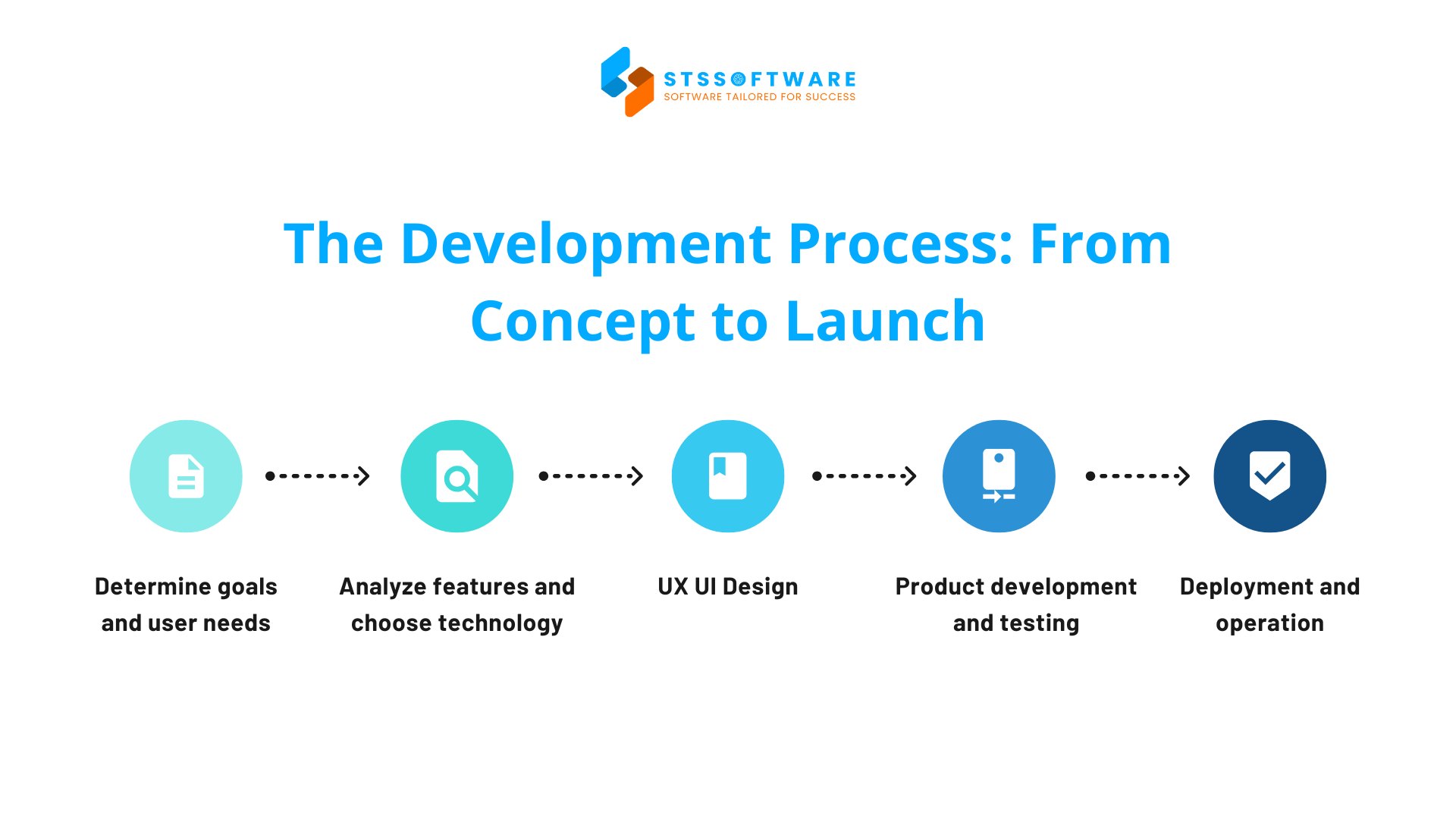
A structured and well-defined approach is necessary for building mental health applications. This helps save time, optimize budget and ensure product quality. Below is a step-by-step roadmap in the mental health app development process that businesses should refer to:
Determine goals and user needs
Before writing the first line of code, businesses need to clearly define: which user groups does the app support? What are the goals? It marks the starting point in developing a mental health-focused mobile solution.
Analyze features and choose technology
Choose the right technology to help the app operate stably and easily expand. This stage also includes determining mental health app features such as logging, emotion tracking, expert advice, etc.
UI/UX Design
The interface needs to be friendly, easy to use and create a sense of lightness. This element plays a major role in encouraging long-term user engagement.
Product development and testing
After completing the design, the technical team will proceed with programming and continuous testing. This stage requires close coordination between programmers, testers and psychologists to ensure quality.
Deployment and operation
The application is uploaded to the App Store, Google Play and begins to reach users. In parallel, the operation team needs to monitor performance, security and user feedback for continuous optimization.
Prototype and Testing Methodologies
In the mental health app development process, prototypes are important tools to illustrate the application’s functionality before programming.
Prototyping Effectively
Creating a mental health app prototype helps save costs and avoid complex bug fixes later. A typical example is the MindDoc application. They developed 3 prototype versions and thoroughly surveyed users before officially programming.
Multi-layered Testing
Testing not only detects technical errors but also ensures the emotional experience of the user. The mental health app testing phase should include performance testing, functional testing, and psychological behavioral testing (UX testing).
Cost Breakdown and Resource Planning
Cost is an important factor in the process of developing a mental health app. Clear financial planning helps businesses control risks and optimize investment efficiency. Below are factors that affect mental health app development costs and suggestions for reasonable resource allocation.
Development team composition
To develop a quality mental health app, businesses need to prepare the right team. At a minimum, it includes a project manager, programmer, UI/UX specialist, mental health specialist and tester. These tools form the foundation needed to begin developing a mental wellness app. Depending on the scale of the project, businesses can build an internal team or cooperate with a software development unit.
Basic development cost
Development costs range from $15,000 to $80,000, depending on the complexity. Basic apps with only note-taking and mood tracking functions will be cheaper than apps that integrate AI or expert advice.
For example, Calm invested hundreds of thousands of dollars in the early stages to build a solid foundation, which it then scaled quickly.
Expected development time
In terms of time, the development process of a mental health app usually lasts from 3 to 6 months for the first version. Larger projects can take up to 12 months, depending on the number of features, testing methods, and approval processes.
Maintenance and upgrade costs
After launch, businesses need a budget to maintain the system, update content, and handle bugs. This cost typically accounts for 15–20% of the budget each year.
Return on investment (ROI)
If built correctly, the app can deliver a good ROI. A paid subscription model or online consultation are popular approaches.
Monetization Strategies for Mental Health Apps
Creating a lasting revenue model is often a top consideration during development. A good mental health app business model would not only keep you afloat but set the basis for growth over the long haul.
Subscription Model
This is the most popular option. Users pay a recurring fee to access advanced features like meditation, CBT therapy, or 1:1 counseling. Headspace and Calm both use this model, with fees ranging from $5–$15/month.
Freemium Model
Users can access core features without cost, while premium options come with a fee. For example, users can keep an emotional diary for free, but need to upgrade for in-depth analysis. This approach draws in users early on and increases the chance of paid conversions later.
Partnering with healthcare providers
Some businesses build a monetization model by partnering with hospitals, clinics, or insurance. The app becomes a treatment support tool, and the healthcare provider pays for the usage fee according to the agreement. This is a suitable direction for mental health app business models that aim for high expertise.
Selective advertising
Some apps display ads from reputable healthcare brands. However, content needs to be controlled so as not to affect the user experience. This option is suitable for free apps with a large number of users.
Why Choose STS Software as Your Partner for Mental Health App Development
With extensive experience in the healthcare software development, STS Software is confident to be a trusted partner in the mental health app development journey. We understand that each mental health app needs to ensure security, ease of use, and suitability for each user group.
We do not use pre-packaged solutions. Instead, STS Software designs custom software for mental health according to the specific needs of each organization. From emotional tracking, meditation, to integrating expert advice — every element is personalized based on the user journey and treatment goals.
Thanks to STS Software healthcare expertise, we always put compliance (such as HIPAA, GDPR) and user experience at the center. The solutions we provide are not only effective but also ensure humanity in every interaction.
If you are looking for a partner with both technology and healthcare expertise, STS Software is the ideal choice to work with you to develop a sustainable and secure mental health solution.
Future Trends in Mental Health App Development
The mental health app market is changing faster and more dramatically than ever before thanks to new technologies. Underpinning many of today’s mental health app development trends are Artificial Intelligence (AI), machine learning, and predictive analytics.
It can be said that these technologies help personalize therapeutic content, predict user behavior, and provide early warnings of mental disorders. For example, some apps have used AI to monitor emotions through voice or analyze data from wearable devices.
The future of mental health apps will move towards smarter solutions, timely interventions, and more in-depth support for each individual. In addition, the trend of integration with the overall healthcare system is also increasing.
Therefore, grasping the right technology trends will help businesses develop effective applications and anticipate the actual needs of users in the future.
Conclusion
In short, the making of a mental health app involves technology, some expertise, and also user experience. To be effective in their mental health app development, businesses need to keep an eye on everything from when the idea is conceived to when it is actually operating.
Important factors include: choosing the right features, ensuring data security, legal compliance, and building a friendly interface. Understanding how to create a mental health app helps businesses avoid risks and optimize investment costs.
If you are looking for an experienced mental health application development partner who knows the industry well and is willing to cooperate for the long haul, look no further than STS Software. We are always ready to team up with you to build solutions that create practical and sustainable value.



